#ace-muslim's adventures in activism
Explore tagged Tumblr posts
Photo



Two selfies and a photo of me taken by a third party from Creating Change 2018. The second and third photos are from an activist mobilization we did during the conference.
19 notes
·
View notes
Text
Alex Recommends: May and June Books
I must apologise for the late arrival of this post. It should have been up days ago but I’ve been struggling to read much for the last month or so. My head has been very foggy and dark with all of the confusion, anxiety and hate that has been filling my news feeds and I’ve been filled with a desire to combat it. Before this month, I’d have run in the opposite direction from any kind of confrontation but recent events have given me the kick up the butt to actively do better. I’ve been calling out bigotry when I come across it and I’ve noticed that some people, notably my older relatives, haven’t necessarily reacted favorably to the changed, more outspoken Alex. It has been pretty daunting and I’ve worked myself up into fits of rage and tears several times over the last couple of months.
A lot of things have changed for me since my last Alex Recommends post. I’m currently temporarily living in Staffordshire with my boyfriend because my depression got too bad for me to stay at home for much longer. I missed him unbelievably much and I knew that spending some prolonged time with him would help -and it has. Both him and I have spent 12 weeks religiously following all of the rules, so we’re both extremely low-risk for catching and spreading COVID-19 and being together was something that we simply really needed to do. Please don’t hate me for it! In other news, I have also started writing again, which feels amazing. I’m now a few thousand words into a queer Rapunzel retelling that I have lots of ideas for. Maybe I’ll even post an extract or two, when I feel it’s ready to show you.
In the centre of the renewed energy of Black Lives Matter and the undeniable exposure of the horrors that is police brutality, the book blogging and BookTube worlds vowed to uplift Black voices. I wrote a very long, in-depth blog post full of Black-written books and Black book influencers. Please check it out to diversify your TBR and educate yourself on Black issues, which is what every white person should be doing now and always.
June was Pride Month and I tried my best to compile a series of recommendation posts in honour of it. These included gay, lesbian, bisexual, transgender, non-binary, ace, pansexual and intersex lists. I’ve had some great feedback on this, so I hope you find some fantastic new reads. It felt especially poignant to put them together the same year that one of my childhood heroes came out as an ignorant trans-exclusive feminist. As a lifelong Harry Potter superfan and someone who has repeatedly publicly supported Rowling in the past, I feel the need to clarify where I now stand. I do not support or agree with a single thing that she has said in recent times with regard to transgender people. I’ve never felt my own status as a cisgender female threatened by trans people wanting more rights or believed that children or women were at risk due to their existence.
I read her words more than once and struggled to find any semblance of the woman who wrote the books that have most defined my life. I’m hesitant to say that we can always successfully separate the art from the artist but I will say that it makes sense to me that the Rowling of 2020 is not the same Rowling that wrote Harry Potter. She was a destitute single mother when Philosopher’s Stone was published in 1997 and of course, she is now a million worlds away from that lifestyle. It breaks my heart but it makes sense to me that she has changed beyond belief because her life has changed beyond belief. I’m not and never would make any excuses for her recent behaviour and I have stopped supporting her personally but I will not be getting rid of my Harry Potter books and I will undoubtedly re-read them several more times. However, I am now hugely reluctant to buy any more merchandise or special editions of the books, which saddens me but at the moment, it feels right. There is no coming back for her from this and I will make a conscious effort to keep Harry Potter and Rowling away from my future content. It can be really tough to admit that the people you once really admired aren’t great humans but it’s something that we all have to acknowledge in this case, in order to move forward with our own quests to become our best selves.
It didn’t feel right to post my May recommendations last month as I didn’t feel comfortable promoting my own content in the midst of boosting Black voices. So today I’m bringing you a bumper edition of Alex Recommends. Here are 10 books that I’ve enjoyed since the start of May that I’d love to share with you. Enjoy! -Love, Alex x
FICTION: Little Fires Everywhere by Celeste Ng
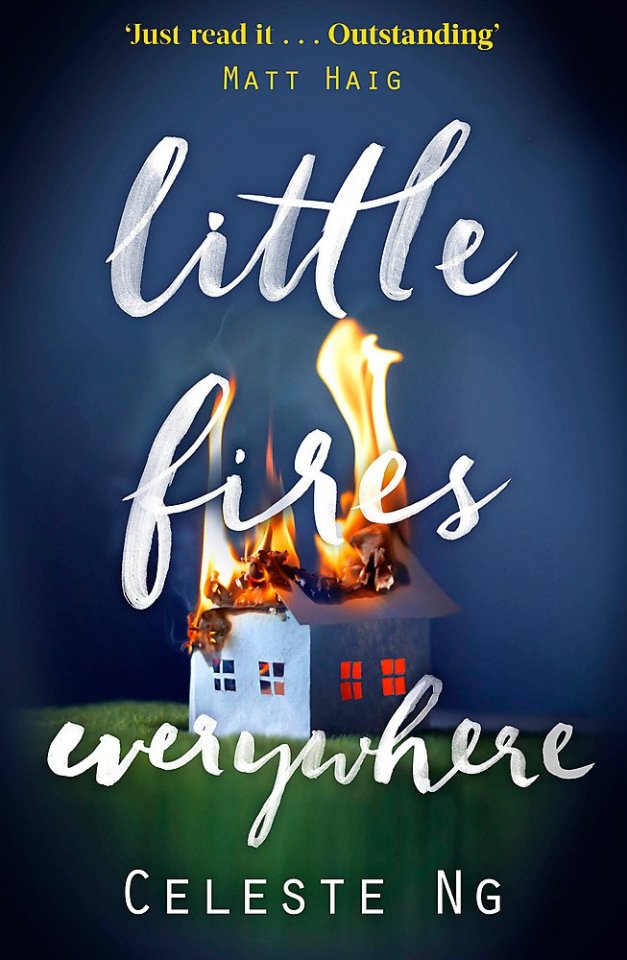
Set in the affluent neighbourhood of Shaker Heights, Ohio in the 1990s, two families are brought together and pulled apart by the most intense, devastating circumstances. Dealing with issues of race, class, coming-of-age, motherhood and the dangers of perfection, Little Fires Everywhere is highly addictive and effecting. With characters who are so heartbreakingly real and a story that weaves its way to your very core, I couldn’t put it down and I’m still thinking about it over a month after finishing it.
FICTION: Get A Life, Chloe Brown by Talia Hibbert
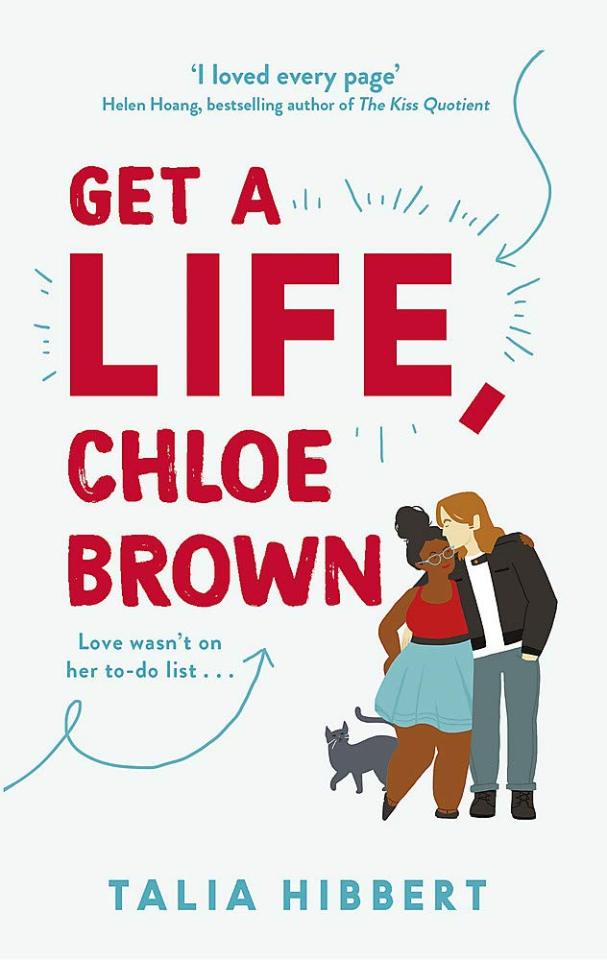
When coding nerd Chloe Brown almost dies, she makes a list of goals and vows to finally Get A Life. So she enlists tattooed redhead handyman and biker Red to teach her how. Cute, funny and ultimately life-affirming, this enemies-to-lovers rom-com was exactly the brand of light relief that I needed this month. The follow-up Take A Hint, Dani Brown focuses on a fake-dating situation with Chloe’s over-achieving academic sister and I can’t wait to get my hands on that.
FICTION: The Rearranged Life of Oona Lockhart by Margarita Montimore
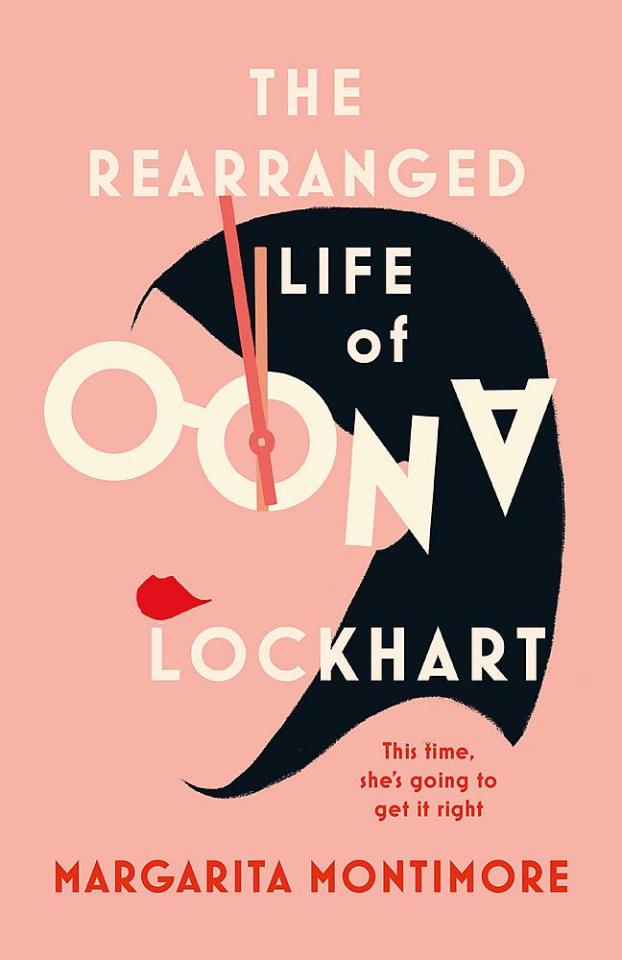
Just before her 19th birthday at midnight on New Year’s Eve 1983, Oona Lockhart finds herself inexplicably in 2015 inside her 51-year-old body. She soon learns that every year on New Year’s Day, she will now find herself inside a random year of her life and she has no control over it. Seeing her through relationships, friendships and extreme wealth, this strange novel has echoes of Back To The Future and 13 Going On 30 with a final revelation that I certainly never saw coming.
NON-FICTION: The Five by Hallie Rubenhold

Atmospheric and engaging, The Five details the previously untold stories of Polly, Annie, Elisabeth, Kate and Mary-Jane -the women who lost their lives at the hands of Jack the Ripper. Full of fascinating research and heartbreaking accounts of what these women’s lives may have been like, Rubenhold paints a dark immersive portrait of Victorian London and gives voice to these tragic silenced lives. Although we can’t know for certain if these accounts are entirely accurate, they feel very plausible and in some ways, The Five exposes how little time has moved on, when it comes to the public portrayal of single, troubled women.
NON-FICTION: Unicorn by Amrou Al-Kadhi
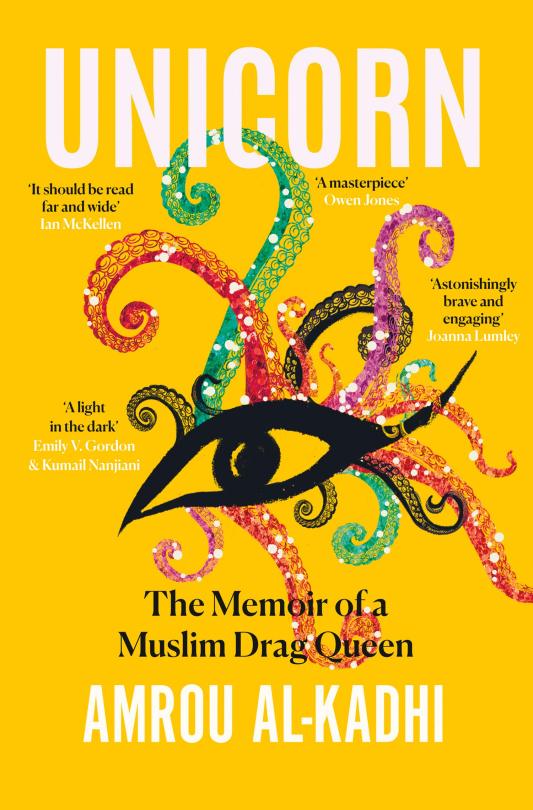
From a childhood crush on Macaulay Culkin to how a teenage obsession with marine biology helped them realise their non-binary identity, Unicorn tells the story of how the obsessive perfectionist son of a strict Muslim Iraqi family became the gorgeous drag queen Glamrou. Packed full of humour, honesty and heart, this book will give you the strength and inspiration to harness what you were born with and be who you were always meant to be.
MIDDLE-GRADE: The Super Miraculous Journey of Freddie Yates by Jenny Pearson
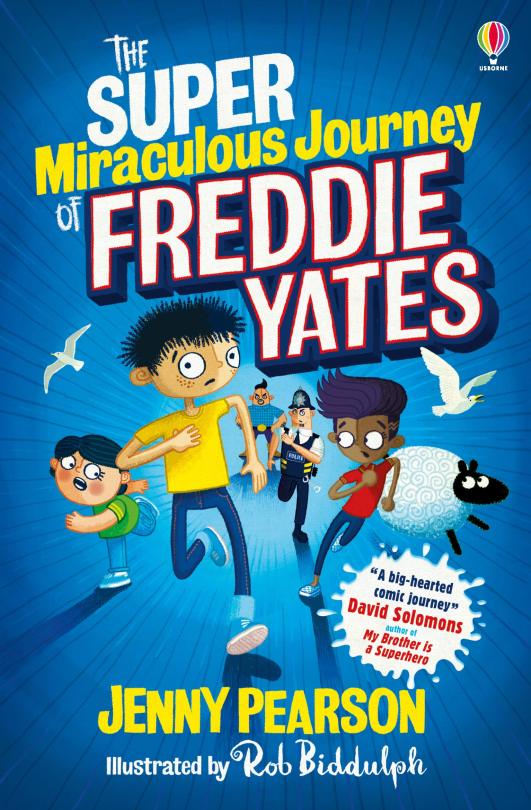
When fact-obsessed Freddie’s grandmother dies, he discovers that the father he has never met may actually be alive and living in Wales. So he has no choice but to grab his best friends Ben and Charlie, leave his home in Andover and go to find his dad! I laughed so many times during this madcap adventure and I know the slapstick crazy humour will hit the middle-grade target audience just right. It’s also a wonderful depiction of small town Britain with a focus on the true meaning of family.
MIDDLE-GRADE: A Kind Of Spark by Elle McNicoll

When Addie learns about her hometown’s history of witch trials, she campaigns tirelessly to get a memorial for the women who lost their lives through it. This wonderfully beautiful novel gives a unique insight into the mind of an 11-year-old autistic girl with a huge heart. Busting myths about neurodiversity while tackling typical pre-teen drama, you’ll laugh, you’ll cry but most of all, you’ll close the book with a huge smile on your face.
HISTORICAL FICTION: Hamnet by Maggie O’Farrell
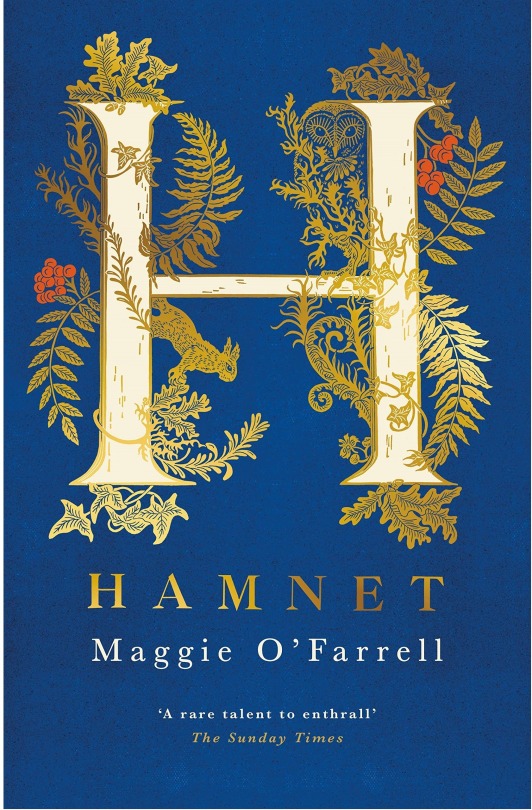
In 16th century Warwickshire, Agnes is a woman with a unique gift whose relationship with a young Latin tutor produces three children and a legacy that lasts for centuries. This enchanting, all-consuming account of the tragic story of Shakespeare’s lost son, the effects that rippled through the family and the play that was born from their pain will send a bullet straight through your heart. Wonderfully researched and beautifully written, Hamnet is worth all of the hype.
HISTORICAL FICTION: The Mercies by Kiran Millwood Hargrave

When a vicious storm kills most of the men of Vardø, Norway, it’s up to the women to keep things going but a man with a murderous past is about to come down with an iron fist. At the heart of this dark tale of witch trials, grief and feminism, two women find something they’ve each been searching for within each other. Gorgeously written with a fantastically slow-burning queer romance, Kiran Millwood Hargrave’s first adult novel is an addictive, atmospheric read with a poignant, tearjerker of an ending.
SCI-FI: Q by Christina Dalcher

When one of Elena’s daughters manages to drop below the country’s desired Q number, she is sent away to one of the new state schools and Elena is about to find out something she’d really rather not know about the new system. Packed full of real social commentary and critique of life as we know it while painting a picture of how things could be even worse (yes, really!), this pulse-racing, horrifying sci-fi dystopian gripped me from the first page and refused to let me go.
3 notes
·
View notes
Text
Blog Tags
#updates #currently reading #book review #book list #book art
Genres and Themes
#activism (civil rights, resistance) #adventure #art (music, performance, creative pursuits) #climate #colonialism #communism #competition (tournaments, sports, etc) #contemporary #crime #cross-cultural #disaster #dystopian #faith #fairy tale #family #fantasy #fantasy, contemporary #fantasy world #friendship #folklore #historical, 20th century #historical, ancient #historical, medieval to 19th century #holocaust #immigration #magic #magical realism #monsters #mystery #mythology #paranormal #political #psychological #school #sci-fi #slice of life #thriller #travel #refugee #revolution #romance #royalty #war
Representation
Note: I switched to using wlw, m/m, and m/f for romance pairings. Some older reviews have gay, lesbian, straight. (And nonbinary for enby characters)
#adopted #asexual (ace-spec), also #no romance #biracial (multiracial) #bisexual (#pansexual) #buddhist #christian (#catholic, #orthodox christian) #chronic illness #disability #disability, physical #gay #hindu #hijabi #homelessness #indigenous #jewish #lesbian #lgbtq+ #mental health (#ocd, #anxiety, #austistic, #bipolar) #m/f (#straight) #m/m (#gay) #muslim #neurodivergent #other faiths #nonbinary (genderqueer, genderfluid, etc) #plus size #romani #sikh #transgender #wlw (#lesbian)
Regions
#africa #west africa #north africa
#asia #southeast asia #central asia
#caribbean
#central america #north america #south america
#europe #eastern europe
#indian ocean
#middle east
#oceania
1 note
·
View note
Text
Best Places to Visit in Abu Dhabi
Abu Dhabi, the capital of the United Arab Emirates, is a well-organized, productive metropolis with a lovely waterfront position. Abu Dhabi is one of the greatest destinations to visit in the UAE for combining sun and sand with a city break, with a coastline bordered by beaches. On the outskirts of the city, there are several adventures and things to do. With this list of the best sights and activities, plan your Abu Dhabi itinerary.
Sheikh Zayed Grand Mosque
The stunning and extremely massive Sheikh Zayed Grand Mosque, clad in white marble, is Abu Dhabi's flagship edifice and by far the city's most popular tourist attraction. It is the largest mosque in the United Arab Emirates, and non-Muslims are welcome to visit all portions of the mosque. It also offers free guided tours regularly.
Abu Dhabi’s Eastern Mangroves
To see a different side of Abu Dhabi, visit the mangrove forests that still wrap the islands along the coast. Kayaking tours are available for people of all ages, skills, and abilities. Signing up for night excursions and learning about the mangroves while gliding along the rivers after dark is another fantastic way to have a genuinely unique experience.
Ferrari World
This theme park brings the excitement of Formula One racing to Abu Dhabi and is one of the city's top attractions for adrenaline junkies and families alike. On the Junior GT track, small children can put their freshly acquired driving talents to the test, while adrenaline addicts can ride the Flying Aces roller coaster. For serious car nerds, there's also a collection of Ferrari cars dating back to 1947, as well as a Ferrari factory tour and Ferrari knowledge quiz show.
Louvre Abu Dhabi
Louvre Abu Dhabi is the most spectacular museum in the Middle East, tracing the full history of humanity's artistic achievements. The museum's contemporary architecture, with its galleries gathered under a vast silver dome, is reason enough to visit. The wealth and diversity of art on display, from ancient Egyptian statuary to famous paintings by Picasso, is awe-inspiring.
Yas Marina Circuit
The Abu Dhabi Formula One Grand Prix, held at Yas Marina Circuit in November, is the city's major yearly event. Even if you aren't in town for the race, you can still get a taste of the Formula One glamour all year. For Formula One enthusiasts who wish to view the track and get a behind-the-scenes look at the circuit, there are frequent guided excursions that include visits to the pits, grandstand, and podium.
The Desert Dunes
The most popular day excursion or overnight vacation from Abu Dhabi city is a desert safari to the south of Abu Dhabi, either to the scenic Liwa Oasis, which is just on the edge of the Empty Quarter or to the Al Khatim Desert near Al Ain. The world's largest sand dunes are found in the Empty Quarter desert, and the dunes of both locations provide a fantastic playground for anyone who wants to ride dune buggies, try sandboarding, go camel trekking, or simply relax in a desert camp after dark and take in the vast star-strewn desert sky.
0 notes
Text
Asexual Muslim resistance, activism, and self care: Creating Change 2017 and me
This post is for the February Carnival of Aces.
Author note: I originally intended to write this post soon after I got back from Creating Change a month ago. However, thanks to the start of my spring term Arabic classes the week after my return, to the emotional stresses of #MuslimBan that hit right after that, and to the need to get caught up on my other responsibilities while all this was going on, it’s taken me rather longer than I expected to actually get this post out!
I attended the Creating Change conference in Philadelphia from January 18 to January 22, 2017. I had several different goals for the conference, reflecting different facets of my identity and work:
connect in person with other aces
connect in person with other queer Muslims
attend anti-racism workshops to further my volunteer work with the Muslim Anti-Racism Collaborative (MuslimARC)
attend organization building workshops relevant to the needs of MuslimARC
attend sessions on spirituality and self-care to help me in coping with burnout
The fact that I could further my interests in so many different areas of my life is why I was so excited to attend the conference. MuslimARC is not an ace or queer organization but since I have access to the resources that Creating Change offers due to my own ace and queer identity, I figured I might as well take advantage of it.
To my delight, I was able to attain all of my goals for the conference and benefit in each of these areas of my life.
Due to the way my asexuality, my being a Muslim convert, and my accessibility limitations intersect, I have difficult in connecting with groups in my local area. The Muslim spaces nearby that I am able to get to are usually not welcoming to me and not places where I fit in at all. I have been making efforts for the last several years to show up anyway because I hoped that even a flawed space would be better than nothing, which is what I have otherwise and what I had for most of the time since I converted.
Creating Change offered a chance to participate in spaces that are more inclusive of my identities. These spaces were limited - just one panel and one official gathering for each of my core identities (the ace inclusivity panel and ace caucus on the one hand and the Islamophobia panel and jumu’a prayer service on the other) - or on the margins (the unofficial ace hospitality suite and the unofficial queer Muslim caucus) but they did exist. While I could see ways these groups might fall short of providing all the support I need on an ongoing basis, within the context of the conference just the fact that they were there at all was enough.
Beyond just finding community spaces where I could meet others who share identities with me, I was able to have deep conversations with David Jay and with queer Muslim activist leaders Imam Tynan Power and Palmer Shepherd telling them my personal story and the issues I experience and even advocating for greater inclusion of asexual Muslims. The Muslim Alliance for Sexual and Gender Diversity (MASGD), which both Ty and Palmer are actively involved with, has not made any efforts so far to reach out to asexual Muslims or even acknowledge in their public materials that we exist and I emphasized to Ty and Palmer how important it is to mention aces by name because otherwise we will assume that we are not welcome. Meanwhile, I gave DJ a reference to my Asexuality and Islam website and a printout of asexual Muslim data gleaned from the ace census, so that he can amplify these resources.
The most valuable thing about these three talks was that although each group represents only half of my identity by itself, I was able to share all of myself with them. These were probably the most deeply validating experiences of the whole conference for me. And while there is still no actual asexual Muslim community (a continuing frustration of mine), I hope that my work in these conversations can help other asexual Muslims as individuals find the same validation I did.
Meanwhile, as I attended the Racial Justice Institute and a session on building sustainable funding for nonprofit organizations, I found that I was able to reference MuslimARC frequently, contribute usefully to the conversations based on my experiences volunteering there, and learn some tools and frameworks that will be useful to MuslimARC’s work. I even decided it would be useful to list MuslimARC as my organizational affiliation at future Creating Change conferences to continue building in this area. This was a pleasant surprise.
Two other workshops I attended with a racial justice focus, the Police Violence Institute and the alternatives to law enforcement session, gave me something I hadn’t expected - an insight into how Creating Change can be useful to connect ace youth, especially those from marginalized backgrounds, to LGBTQ resources that already exist to help address the larger systemic issues they face. I was able to talk with the head of an LGBTQ center in Colorado about asexuality, discover that they are already seeing ace youth seeking out their resources, and connect them with Asexual Outreach to get information and resources on asexuality. The opportunities for networking at Creating Change are amazing and next year I might print out some resources from Asexual Outreach to be able to give to people!
On the spiritual front, I made use of the Many Paths Spiritual Gathering Place as a prayer room - with five daily prayers, the logistics of being Muslim at a busy conference can be tricky and having that dedicated space out of the crowds made things a lot easier. I got to know the spiritual care team there and through the centering care workshop and the session on building an authentic spiritual path. Because of the limited space provided for Muslims specifically at the conference, and because Ty is only one person, the spiritual care team ended up providing me with a lot of support and friendship I didn’t expect to receive. Beyond this, some of the practices and ideas I gained from these sessions are things I am slowly working to implement in my life back home with links to both queer spirituality and anti-racist self-work.
Speaking of the unexpected, the conference pushed me way out of my comfort zone in multiple ways. I was initially very anxious about wearing both hijab and obvious ace gear at an LGBTQ conference where I wasn’t sure either identity would be fully welcome - but I spent five days as a very visible asexual Muslim and most people hardly blinked.
I did experience a few microaggressions, all related to being Muslim (none were related to being ace). While I was attending the Police Violence Institute a white woman acted to me in a way that I found rather tokenizing (”I’ve never seen a queer Muslim before! Can I have your business card?”) and I had to spend several minutes educating her about effective allyship (build relationships with the affected community and learn what they need you to do, then do that).
Also, at the end of the ace caucus, a white ace came up and asked me if I was a nun (yes, I consider this a microaggression). I also got this question from a random stranger while I was buying food in Reading Terminal Market one afternoon. Still, I was expecting a lot worse than this and I was really very pleasantly surprised by how unfazed most attendees were by me. Shout-out to the hijabis who have attended past conferences and paved the way for me.
Besides wearing hijab and ace gear all the time, I ended up on stage during the opening plenary session (me? shy Laura?) and even attended the lesbian caucus. I wasn’t forced to come out as anything (except as Muslim because I was wearing hijab) since there was just a large group discussion I listened to but didn’t take part in. But this was the first time I had made a public connection for myself between being homoplatonic and lesbian identity. I’m still hesitant to identify as an asexual lesbian specifically, but I took a baby step that evening and I’m proud of myself for that.
As if all this wasn’t enough, I participated in the Philadelphia Women’s March draped in an ace pride flag (and wearing an ace pride hijab) and shouting slogans like ���We’re here, we’re queer, we’re fabulous, don’t fuck with us” alongside Mary and Brian, which was pretty freaking awesome. Between that and being at a session on combatting Islamophobia and then at a queer Muslim prayer service during Trump’s inauguration, I figure I put a distinctively asexual Muslim stamp on my resistance that I plan to continue.
Creating Change 2017 was a life-changing experience that for the first time brought my whole self together in a single activist space. I’m still struggling every day with burnout but this was just the self-care I needed to help me get through a very tough time.
#carnival of aces submission#resistance activism and self-care#creating change conference#creating change 2017#cc17#ace-muslim's adventures in activism
37 notes
·
View notes
Text
Creating Change 2017
I’m attending the Creating Change LGBTQ conference for the first time this year, flying out to Philadelphia on Tuesday, January 17, and returning home on Monday, January 23.
There will be an aro & ace spectrum caucus at the conference, and a session on making college LGBTQ centers ace-inclusive. There will also be an (unofficial) aro & ace hospitality suite. I’m hoping to connect with a group of other ace activists including @nextstepcake there.
I’m also planning to attend sessions on topics of personal interest including racial justice, organization building, writing, and Islamophobia. As well, I intend to participate in the Philadelphia Women’s March.
I’ll primarily be using my Twitter account to post updates during the conference, then will post a recap to Tumblr after I get back.
This is definitely a bit out of my comfort zone and I’ll be interested to see how people react to a hijabi Muslim who is also asexual. I’m definitely not the usual type of attendee!
24 notes
·
View notes
Text
Racing Ace: Asexuality, Race, and Social Justice
One of the panels at Creating Change 2018 was “Racing Ace: Asexuality, Race, and Social Justice”. Here are my livetweets from this workshop:
Racing Ace workshop
11 notes
·
View notes